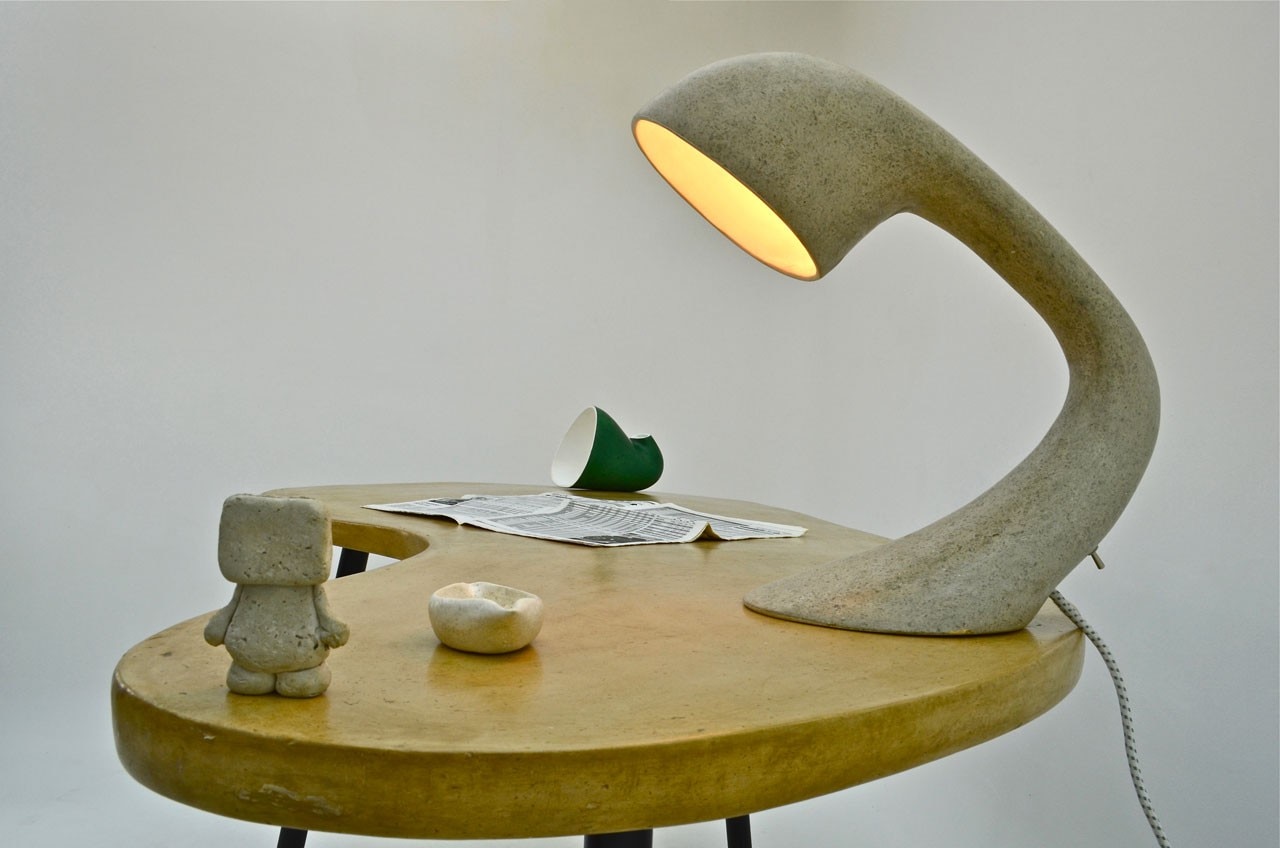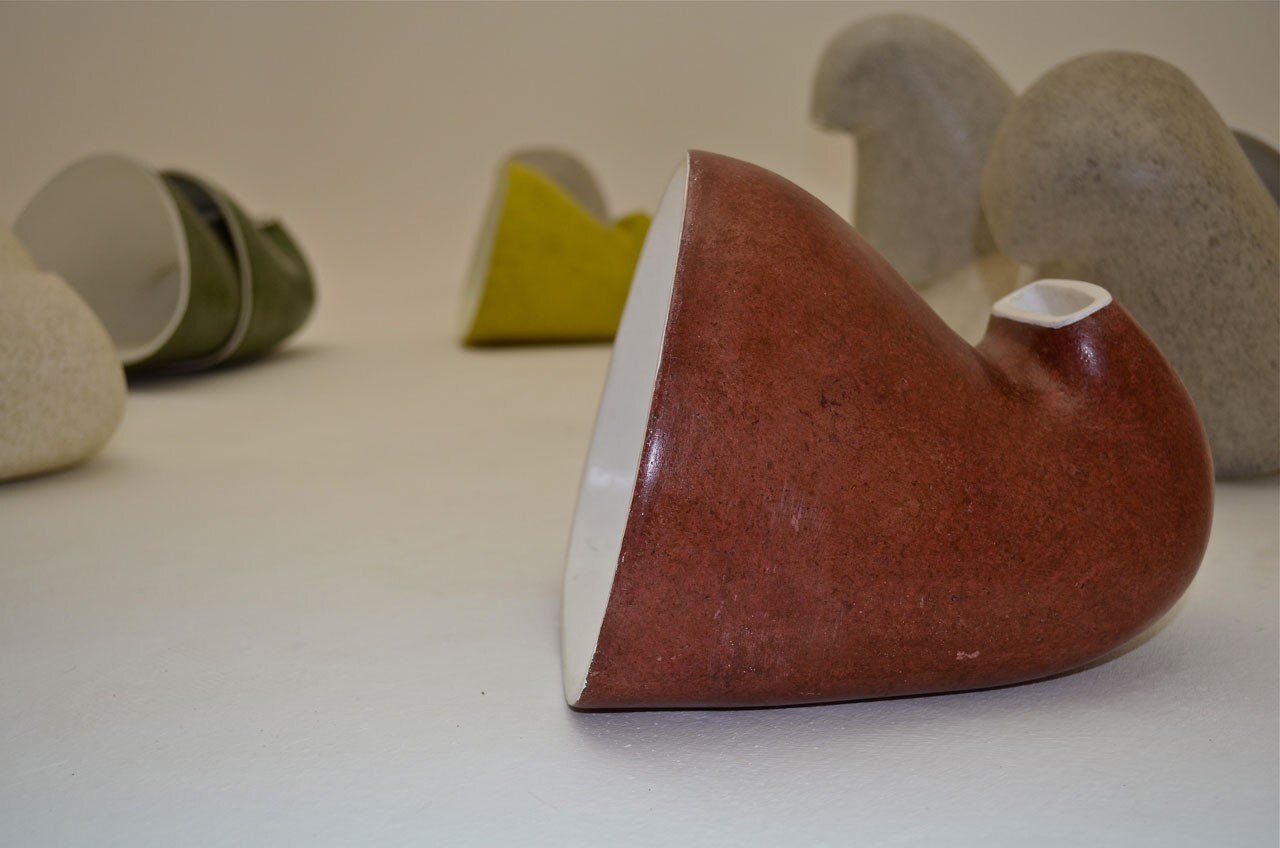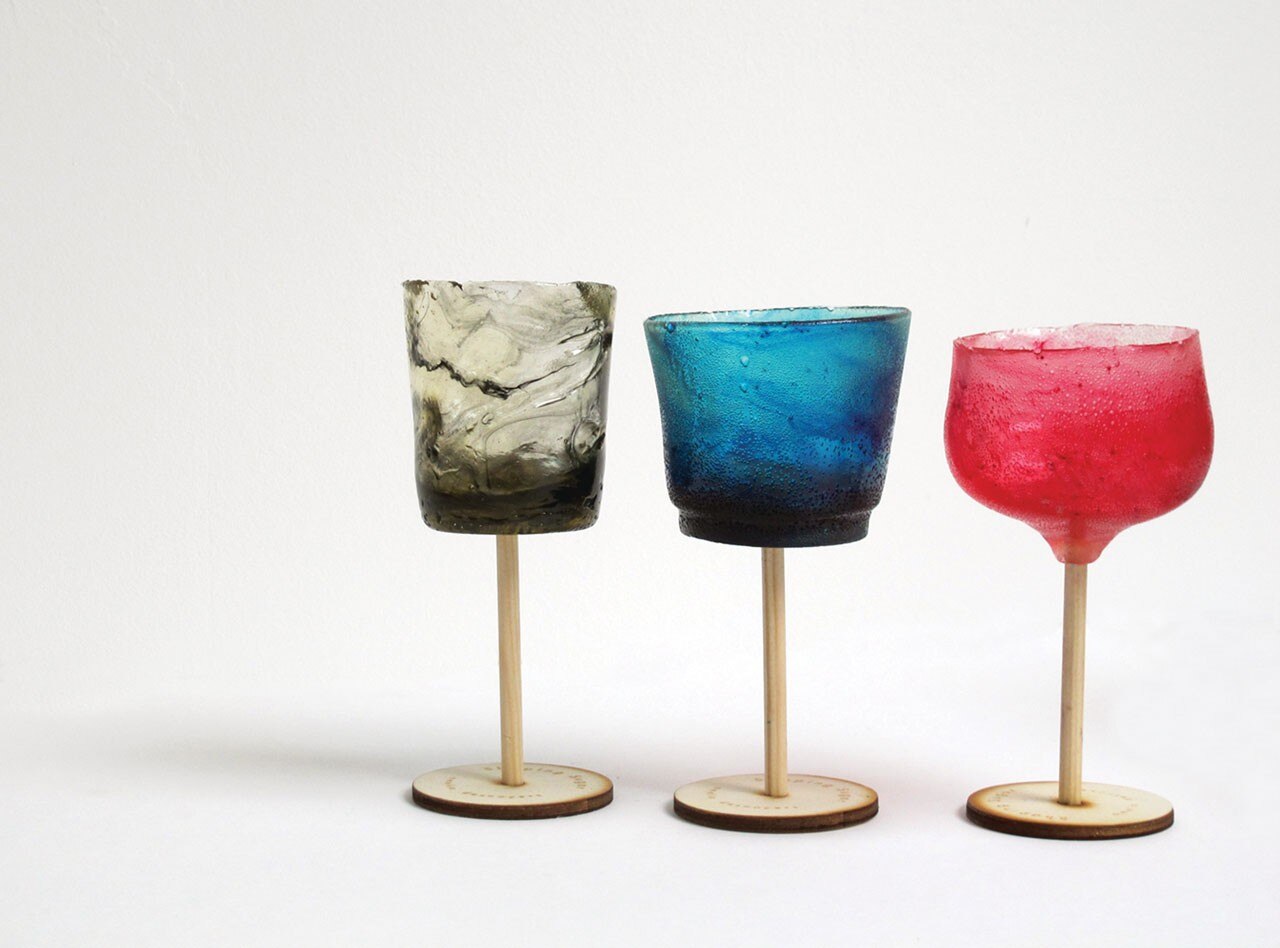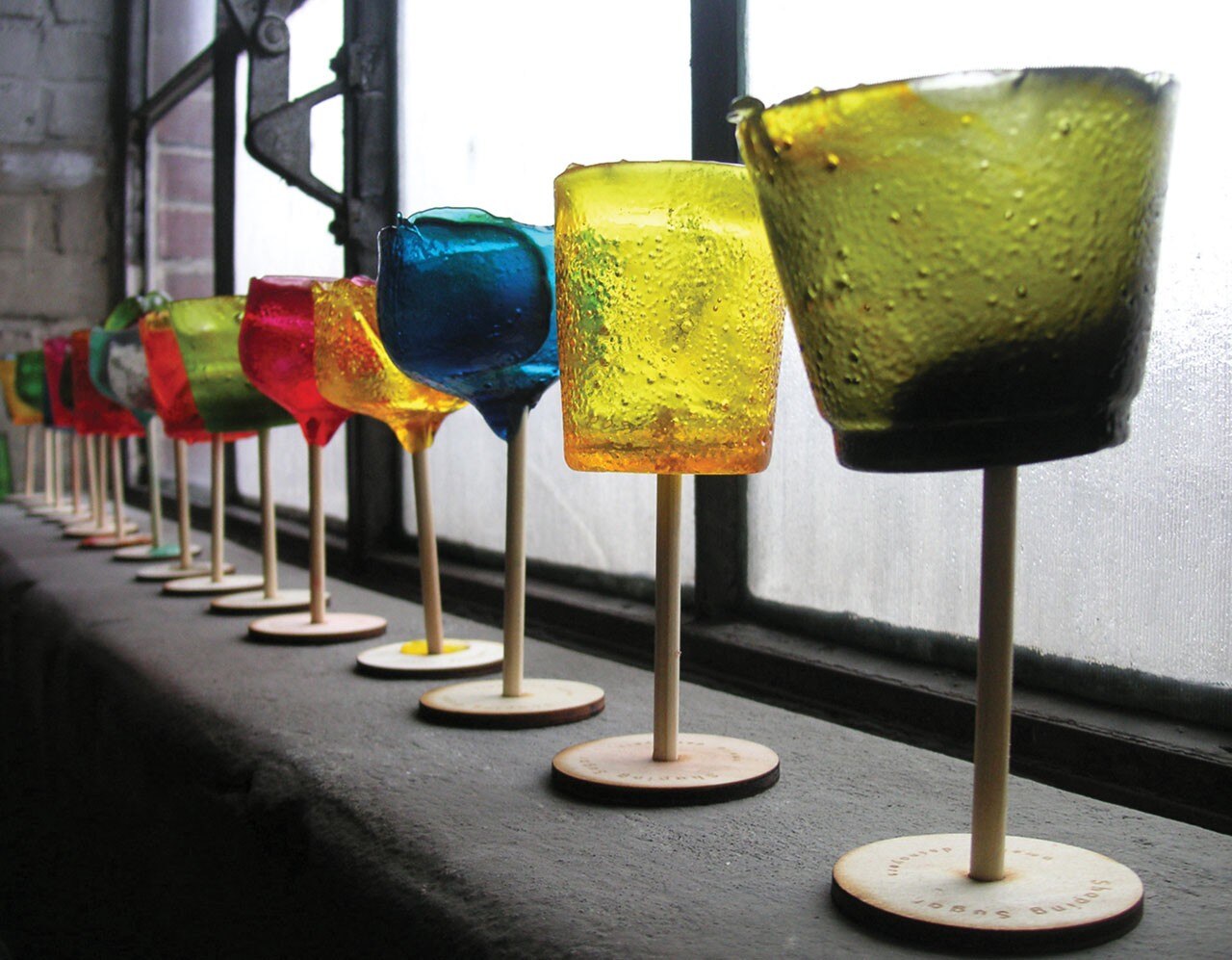
Amélia Desnoyers: Shaping Sugar
The glasses have slightly irregular shapes and come in watery transparent colours – raspberry, lemon, aquamarine and apple - but are made of caramelised sugar. When filled with water, they slowly turn into a drink as the stem of the glass dissolves, adding its flavour, until all is consumed in the space of 15 minutes. You can, quite literally, say you have “drunk a glass”!
The Shaping Sugar project by 29-year-old designer Amélia Desnoyers is a performance executed amid stove and moulds, midway between design and culinary creation. A Parisian from the Marais district, Amélia Desnoyers studied sculpture at the École Nationale Supérieure des Beaux Arts in Paris and gained a Master in Contextual Design from the prestigious Design Academy in Eindhoven, Holland, in 2011. An additional diploma in pastry-making gives her the edge in food-focused projects.
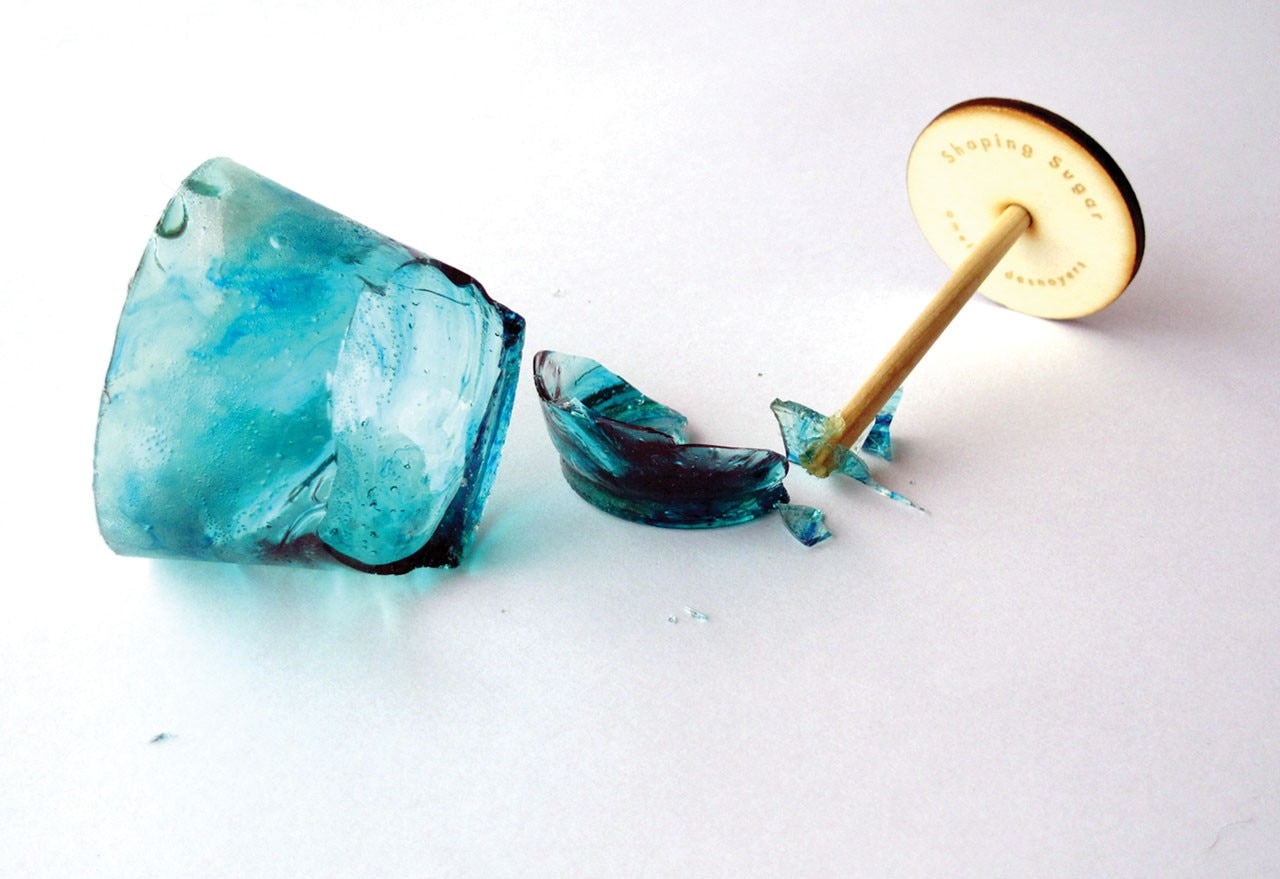
Sugar is a solid material that can be melted and then returned to its solid state. The sugar, glucose and water mixture is heated to 160°C and, once melted, poured into concave silicon moulds that are gently rotated. There it solidifies to a thin, glassy layer to become a caramelised chalice, set on a stem and a wooden base, which give it an (artisanal) glass form.
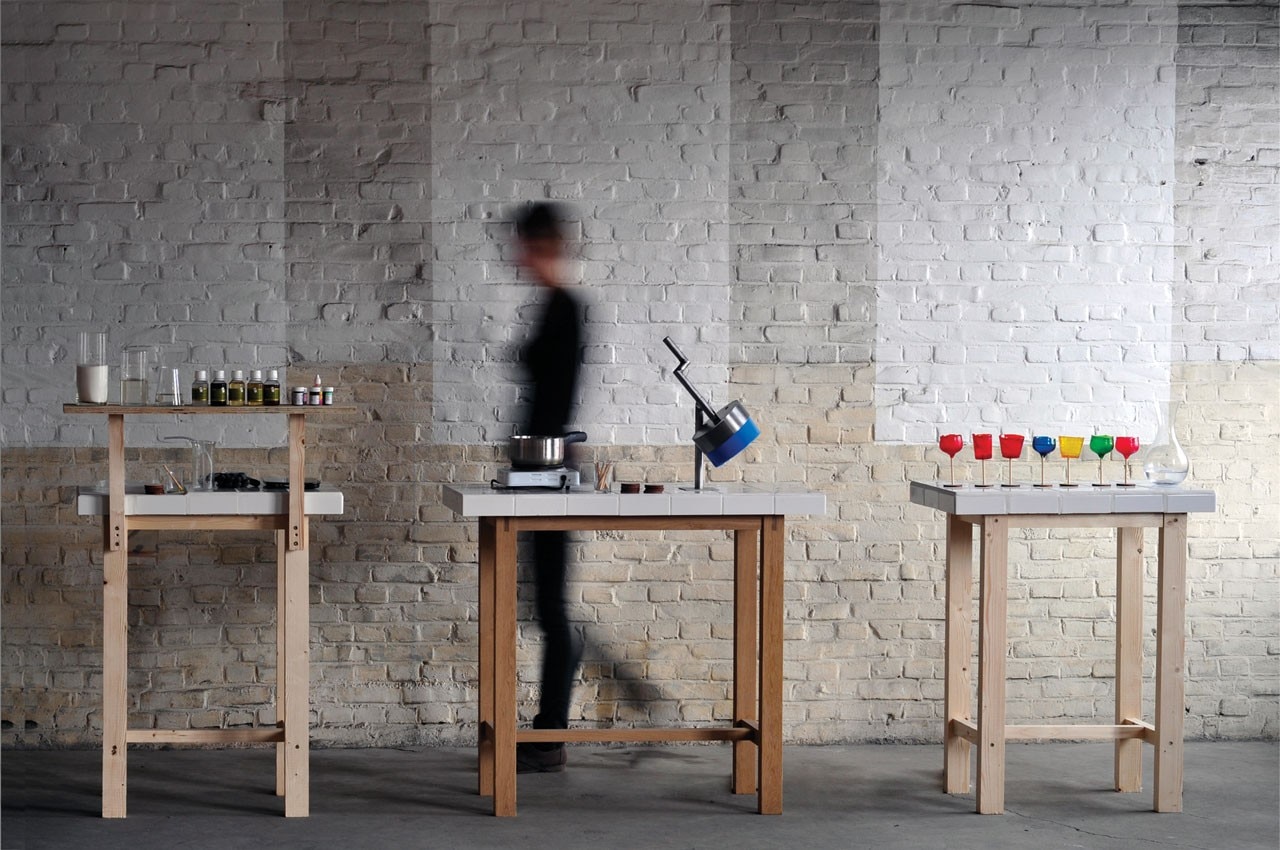
Shaping Sugar is not only a performance but also a new and tongue in cheek way of transporting a kitchen product to another sphere – that of design – proposing new rituals linked to food and drink via transient and changing forms. Matter, form, colour and taste all bond in this new drinking experience.
Desnoyers light-heartedly addresses the changeability of the organic matter. She plays with chemistry and changing states, and asks us to reflect on the hardness of the objects around us and all is done intelligently, lightly and with fresh ideas. Francesca Acerboni
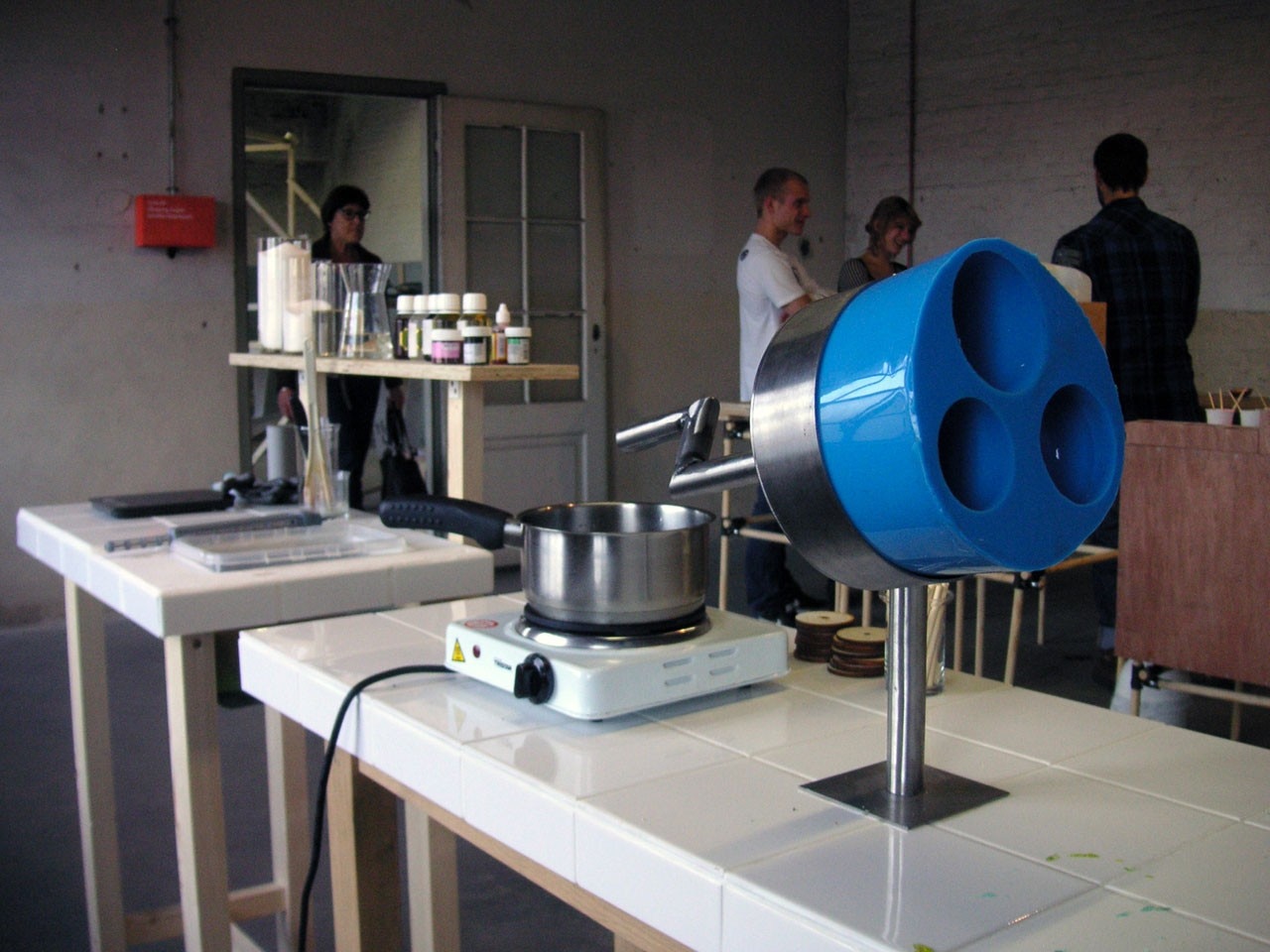
Henri Dejeant: Nonage
Nonage is a term for timeless design objects belonging to the age of infancy. The sinuous, soft and organic, but also fun, forms created by Henri Dejeant seem fashioned out of stone. Instead, they are handmade paper-pulp products produced from a mixture of paper and glue. Living in a world that is half-animal, half-vegetable, their timelessness seems to give them a life of their own. It is no coincidence that Henri Dejeant’s formal universe “belongs to the world of comic strips and science-fiction films.”
Following in the family’s footsteps – his father is a designer and his mother a painter – Henri Dejeant spent his infancy in flea markets, fascinated by objects of the 1950s and 1970s. He first developed his manual skill working as a craftsman with materials such as iron, wood and chalk. He then moved to Morocco to learn the local crafts and, in the souks of Marrakesh, developed an interest and a personal technique of working with paper pulp. An extremely eco-friendly, recycled material, paper pulp is not a common technique in the design sphere but the young and self-taught Henri Dejeant studied and experimented to ensure it is as high-performing as possible.
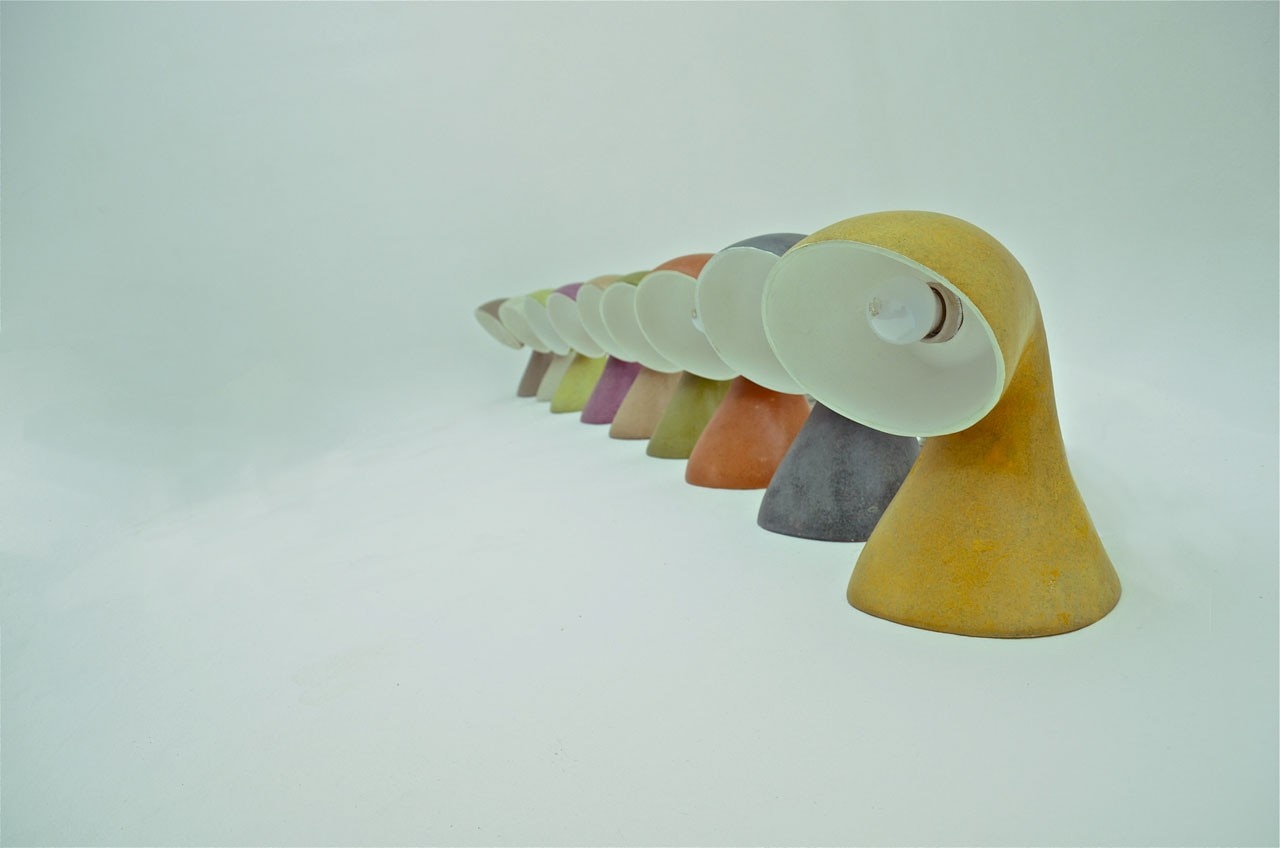
The 90%-paper compound is held together by biological glue. The pulp is worked to create a fine composition that, once placed in the mould, produces a very smooth surface. This surface is also treated with beeswax to increase the polish and guarantee greater protection. The fané colouring is achieved with natural pigments mixed into the pulp and is the same as that adopted in Morocco for the Tadelakt technique.
In his artisanal workshop, Dejeant builds the layered wood forms from which he then makes the silicon moulds into which he pours the paper pulp. He also employs CAD, of course, to design the contours of the layers that make up the wood bases.
